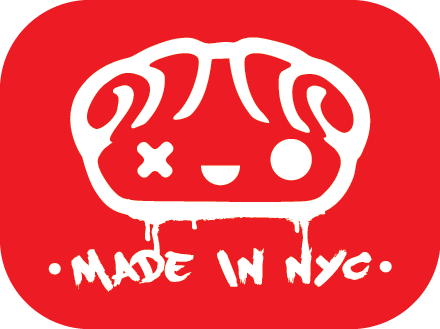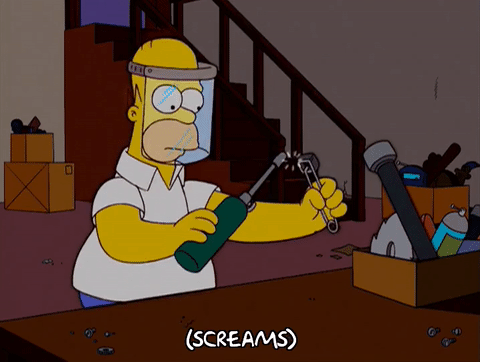Replace Your Filters
PPE Maintenance PSA
As makers, we share what we research, test, and use. If you decide to purchase anything we mention using our referral links, we may get a small commission at no cost to you. If you’d like to learn more, visit our affiliate policy.
To start, this post is meant to be a quick reminder to periodically check your filters for your masks. This is not the be-all-end-all definitive of anything. If anyone has notes to contribute, feel free to get in touch with me on Reddit (r/nycraylin). This is not a sponsored post, the brands mentioned are based on my own and trusted peer experiences. Cool? Cool.
TLDR: The simple answer is to replace them periodically. Open filters will absorb and become saturated passively, so it’s recommended to replace them every 6 months after opening(even if not used), 40 working hours, and or when they start failing, whichever comes first. There are reasons why safety measures are put in place. We only have one body, take care of it and you can keep enjoying your hobbies for longer.
What kind of mask/filters?
That depends. What application are you doing? Spray painting? Sanding? Cleaning Resin prints? There’s different kinds. And no the ones that come with your 3d printer are dust masks and basically do nothing for the vapors.
N95 mask
Particulate Filters (P100, N95, etc.):
Ie. N95 Pre-Filter, Dust Mask.
This type is for sanding, anything that creates dust, etc.
Replace when breathing becomes difficult or after a specific period of use (check the product instructions for any time-based recommendations).
If the filter is visibly damaged or dirty, replace it immediately.
If you're in a dusty or contaminated environment, you may need to replace it more frequently.
Chemical/Combination Filters (e.g., 3M 6000 Series):
This type is for working with chemicals during spraying, painting, etc.
Bayonet Style mount - compatible with both full face and half mask
ie: 3M P100 Respirator Cartridge/Filter 60926
These filters should be replaced based on the manufacturer's recommended usage time, which could be a certain number of hours of exposure or once you begin to smell or taste the contaminants.
Always replace filters if they are damaged, wet, or if you notice a reduction in protection.
If the respirator becomes difficult to breathe through, damaged or the filter is caked with debris, immediately go to a non-contaminated area and replace the cartridge
Remember to find reputable vendors for your supplies.
Check if you have real 3m filters below.
https://safeguard.3m.com/Guest#/Validation
Opening New filters?
Mark the date!
It’s a good to practice whenever you open a new pack of filters for your masks (or even air purifiers if you run those for allergies too) to just write down the date. That way you’re not stuck wondering how long it’s been since you last changed them.
For 3M respirator masks, such as the quick release half mask - the replacement schedule depends on the type of filter you're using.
Obviously it’s much easier to tell if the once white filter is now dark grey because of the particulates that accumulate then you’ve can literally see its time to replace it.
But the chemical/combination filters don’t have that indication - so that’s where noting how long they’ve been open can be a big help. They usually have about 40 working hours before they start to get soiled in my experience, but that depends on the exposure level and work you’re doing.. An autobody painter will have to replace filters frequently compared to consumer/hobby users. Most will rarely use them for many hours when resin printing and painting unless you do this for a living.
Here’s an excerpt straight from 3M.
”How do 3M™ Gas & Vapor Cartridges work?
3M™ Gas & Vapor Cartridges These cartridges utilize sorbent material to absorb the gas or vapor molecules. Typically the sorbent is activated carbon. Different chemical treatments may also be added to the surface of the activated carbon to adsorb different types of gases or vapors. When the cartridges reach their capacity, the gases or vapors start to come through the cartridge to the user. This is called “breakthrough.”
What about so and so “chemist/scientist” on Reddit who says they don’t even wear masks during working etc. Why should I wear one? Are you fearmongering? What’s with all the FUD (fear,uncertainty, doubt) and other questions.
Yeah, so I’m not here to argue, honestly. I’m here to share my experiences and practices in hopes that someone out there finds it helpful. It’s important to note that Most, if not all certified labs should have strong HVAC systems in place to do multiple air changes per hour. Most consumer users, AFAIK do not have set ups like this because why would you?
And it also depends greatly on what chemicals they are using. We can not rule out individual responses to exposure. For instance, some people cannot stand the smell of bleach, it can induce headaches. Others have been using it for 20 years, and they are fine. It’s your call whether the risk for you or your family is worth it.
Almost all safety guidelines in recent history have come off the back of catastrophic incidents that have resulted in people being horribly maimed/injured or killed.
Think - 40-hour work week (thanks to Labor Unions protesting and partially Henry Ford, but his reasoning was mainly so he could keep his factory running 24 hours with 3 shifts, not altruism)
Think - ending child labor (because back then it was normal for children to work - and get their little limbs caught in machinery)
Think - Radium girls for example during the early 1900’s, the “Radium Girls" were young women who worked in factories painting glow-in-the-dark dials on watches and other instruments using radium paint, unknowingly exposing themselves to radiation and suffering severe health consequences, including death. While radium is only faintly radioactive, the women were told to lick their paintbrushes to give them finer points.
(Left) American Weekly, February 28, 1926 (Right) Daily Herald Archives, January 1932
Think - the Titanic, broke no laws. British ocean liners were only required to carry 16 lifeboats, which could hold 1060 people. There was no precedent at the time. Afterwards there have been a lot of changes. Legislation is more often than not written in blood. You rarely have laws in place before bad things happen.
There is a lot of trust people have in the system to have rules in place to protect them. It’s mostly faith - the faith we place in hopes that people will do the right thing. That doesn’t always happen, even with rules and laws in place.
While commercial printing has been around for a while. Resin printing for the home consumer market is a fairly new space.
While we do not have direct studies because studies cost money and time, Which is why companies love them because they can keep doing what they are doing until they are done, and even after a study comes out they can hire their own scientists to produce a study saying the opposite* (Merchants of doubt*
Much like tobacco industry denying the harmfulness and addictiveness. I digress. Feel free to do deep dive if you want to find out more about the lobbyists who deny climate change now, had careers previously doing the same for tobacco. No seriously they have the same play book.
And we actually have studies on resin printing now, thanks to our own u/inorganicnerd who got their work published in the Americian Chemical Society. Here is a link to the article https://pubs.acs.org/doi/10.1021/acs.chas.4c00087 aptly titled: “Volatile Organic Chemical Emissions from Standard and “Eco” Resins for Vat Photopolymerization Additive Manufacturing (“3D”) Printers and Potential Mitigation Strategies” Its a dense read especially for those us without a chemistry background but thankfully he has been helpful to give us some key take aways.
Eco has historically been advertised as “NO VOC” option. This isn’t true.
Measured the emissions of the compounds in 4 phases: Idle, During, Wash, Cure.
The emissions in the idle phase were in some cases HIGHER than those in printing.
Printing a lid for your vat reduces the emissions by over 90%
This is just studying two types of resin - Standard and Eco. Imagine how long it would take to run experiments on all the different types. This is why the studies come after problems start - because it would take companies too much money and effort to produce them - only for it to say their product isn’t as safe as they are advertising it to be. And in the system of capitalism, that hurts the bottom line.
So what can you do about it? Whatever you can, No, really - Whatever is in your control. That starts with setting up a workspace and wearing proper PPE. For most of us - this is a hobby, It should be fun, and fun should not come at the risk of your health.
Is your workspace using active ventilation? Despite what some people may say, an open window is not enough.
I’ve shared what I’ve done for anyone who just wants to get started on printing, readymade solutions do exist. Feel free to compare my notes. A lot of people have based their setups on it over the years.
Alternative Enclosures
Of course, if you’re more handy and have access to woodshop/tools, you can build a fume hood. Check out this Makezine writeup for more info on building your own. They outlined the build if you’re interested..
For me, It is not fear, uncertainty or doubt that drives me to try and mitigate exposure, we must respect the tools and materials we are working with. Complacency, hubris, and ignorance are no excuse IMO.
It’s one thing to put yourself in harm’s way - it’s another to potentially expose your family and or pets. When you know better, you do better.
If you need a more complete PPE list: Check out Resin Safety 101 to see I use in the studio.
Stay safe, and happy printing!
-Ray









